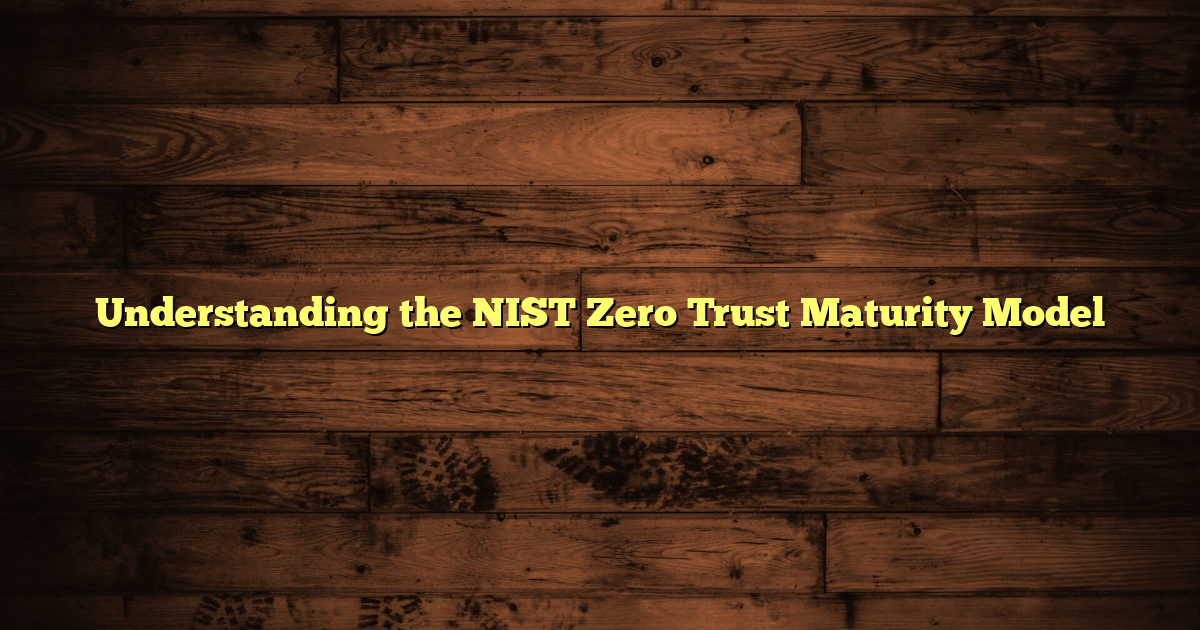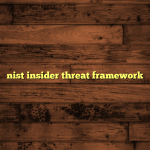Understanding the NIST Zero Trust Maturity Model
Table of Contents:
- What is Zero Trust?
- Overview of the NIST Zero Trust Maturity Model
- Core Components Explained
- How Organizations Can Use the Model
- Benefits Beyond Security
- Conclusion
- FAQ
Understanding the NIST Zero Trust Maturity Model
Did you know that blindly trusting users and devices on your network is like leaving the front door of your house wide open? The NIST Zero Trust Maturity Model offers a structured approach to close that door and build a robust cybersecurity defense based on the principles of Zero Trust Architecture (ZTA). It enables you to transition gradually from traditional security, which relies on a network perimeter, toward a more dynamic security focused on verifying identities and protecting data.
What is Zero Trust?
Zero Trust is not a product you buy. It is a new way of thinking about cybersecurity. It assumes that no user, no device, moreover, no network should be implicitly trusted, regardless of whether it is inside or outside the “corporate perimeter.” Instead, Zero Trust demands continuous verification of every access request. This verification is based on multiple attributes. For example, user identity and device health. Also important are location and the sensitivity of the data being accessed. The purpose is to reduce risk. It does this by applying strict access controls and shrinking the attack surface through microsegmentation in addition to least privilege principles. NIST formalized these ideas. It did so in its Special Publication 800-207 called *Zero Trust Architecture*. The publication outlines the core components and guiding principles for implementing ZTA.
Overview of the NIST Zero Trust Maturity Model
The Maturity Model is a useful roadmap for organizations. It is for those at various stages of their cybersecurity journey. It lets you assess your current readiness regarding Zero Trust. You also use it to plan manageable upgrades toward total implementation. Important parts of this model are:
- Incremental Application – Your organization doesn’t need to achieve Zero Trust instantly. Start with foundational steps. Improve identity governance, for instance. Another good start is network segmentation. Later, move toward more advanced areas, such as continuous monitoring and software-defined perimeters.
- Focus Areas – The Model covers areas that include handling identities. It also handles device security. In addition, it addresses network architecture. For example, microsegmentation. Application workload protections get coverage, as do data security steps, like encryption. Also addressed are monitoring practices together with Policy Enforcement Points (PEPs). Lastly, it looks at fitting it all into your existing enterprise systems.
- Risk-Focused Method – You should give priority to where risks are greatest for your organization. Align these risks with any rules about handling sensitive data.
Core Components Explained
What are the core components of the NIST Zero Trust Maturity Model?
Zero Trust isn’t a single product. It’s a collection of security practices built around a few key ideas.
Identity Governance
Identity is central to Zero Trust. Improved Identity Governance (IIG) needs dependable ways to check user identity. A regular method is multi-factor authentication. Also needed are detailed rules for access rights. These rules must ensure users get only the access they need for their roles. This is called “least privilege.” It greatly lowers insider threats by cutting down on too many permissions.
Microsegmentation & Network Controls
Microsegmentation splits up networks. These segments are small zones. Suppose someone breaks into one zone. They will have a hard time moving around to other segments. This limits damage during breaches. Software-defined perimeters take resource access away from physical places. They do it using dynamic rules. Such rules are used when you connect, rather than relying just on firewalls based on static IP addresses.
Application & Workload Security
Applications are often the first place attackers try to get in. Thus, securing workloads is very important. Use container hardening ways, such as scanning images for weaknesses. Also, be sure that secure API use is happening via checking identities as well as setting access rights. This is what NIST’s guide suggests. It also recommends regular patching cycles to fix known weaknesses.
Data Security Practices
Classify your data first. Then protect it based on its classification. Sensitive data should have strong protection. For instance, encrypt it when stored and when moving around. Keep good records of critical assets. This assists with following legal needs. It also allows focusing defenses on high-value datasets.
Continuous Monitoring & Analytics
Mature Zero Trust needs ongoing tracking of behaviors. It needs real-time logging across every level. That’s from devices to apps. Monitor for unusual things that suggest someone is trying to break in. Do this soon enough to respond before damage gets worse. Also include automated alerts. Set them up to trigger on suspicious actions. Compare those actions to normal patterns.
How Organizations Can Use the Model
You, as an organization, should start by looking at where you are with each area mentioned above. Is multi-factor authentication in use across the board? Is the network segmented between major parts of the business? Do you scan apps regularly? Based on what you find:
- Set achievable goals with schedules.
- Give top priority to things you can do quickly. For example, use MFA or list your sensitive data.
- Slowly add advanced protections. Examples are software-defined perimeters or automatic threat finders.
Such a phased approach helps businesses, especially mid-size to large ones, manage costs. Also, it steadily strengthens protections without stopping the business.
Benefits Beyond Security
Adopting the NIST Zero Trust Maturity Model does more than improve cybersecurity. It also makes IT clearer because of main policy enforcement points and full data collection. This openness helps compliance checks. You have logs showing how access is controlled. Also, it shows how it aligns with rules over time. Also, Zero Trust works well with today’s workers who work remotely. They often use different devices outside the normal corporate network. That’s a situation common after the pandemic. It calls for security that changes as needed, rather than relying on a set perimeter.
Conclusion
The NIST Zero Trust Maturity Model offers real guidance from solid research. It’s for helping groups safely adapt in today’s complex threat environment. It stresses gradual progress across controlling identities, splitting up networks, protecting apps, as well as safeguarding data. Combine that with constant monitoring. This gives businesses the power not just to react. It also gives them power to reduce areas of attack systematically over time. Essentially, it’s about moving from “trust but verify” to “never trust – always verify.” This is achieved step-by-step. You measure progress using clear points within this trusted Model from a leading cybersecurity institution.
FAQ
What is the first step in implementing Zero Trust?
The first step is to assess your current security posture and identify areas where you have the biggest risks or vulnerabilities.
Is Zero Trust only for large organizations?
No, Zero Trust is applicable to organizations of all sizes. It is about adopting a security mindset and implementing controls that reduce risk, regardless of the size of your network.
How long does it take to implement Zero Trust?
Implementing Zero Trust is a journey, not a destination. The time it takes to implement depends on the complexity of your organization, your existing security infrastructure, next to your available resources. But following a phased approach based on the NIST maturity model will enable you to make progress over time.
Resources & References:
- https://www.nccoe.nist.gov/sites/default/files/2024-07/zta-nist-sp-1800-35-preliminary-draft-4.pdf
- https://www.nccoe.nist.gov/sites/default/files/2024-11/zta-nist-sp-1800-35-ipd.pdf
- https://www.cio.gov/assets/files/Zero-Trust-Data-Security-Guide_Oct24-Final.pdf
- https://dodcio.defense.gov/Portals/0/Documents/Library/ZeroTrustOverlays.pdf
- https://media.defense.gov/2024/May/22/2003470825/-1/-1/0/CSI-APPLICATION-AND-WORKLOAD-PILLAR.PDF





